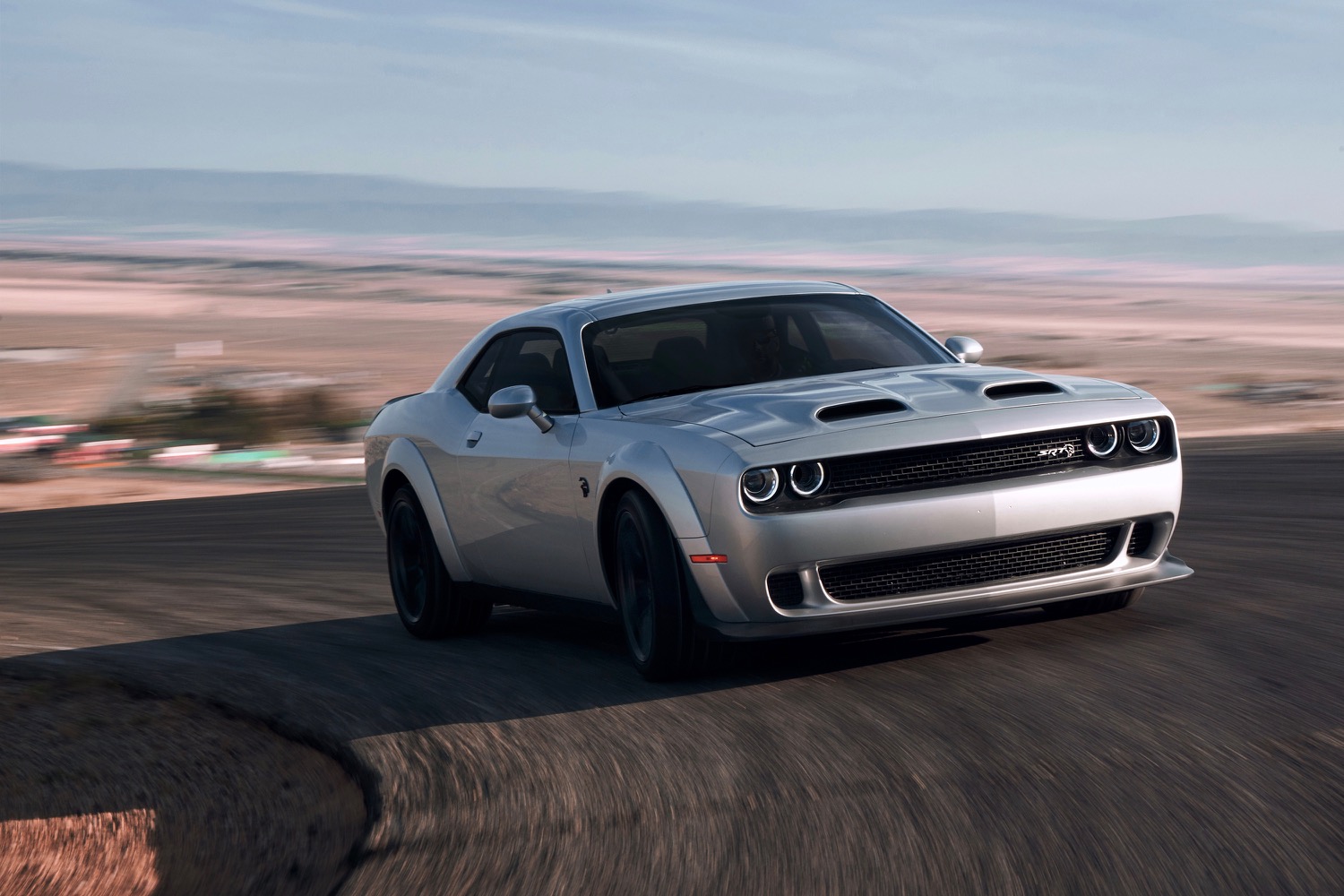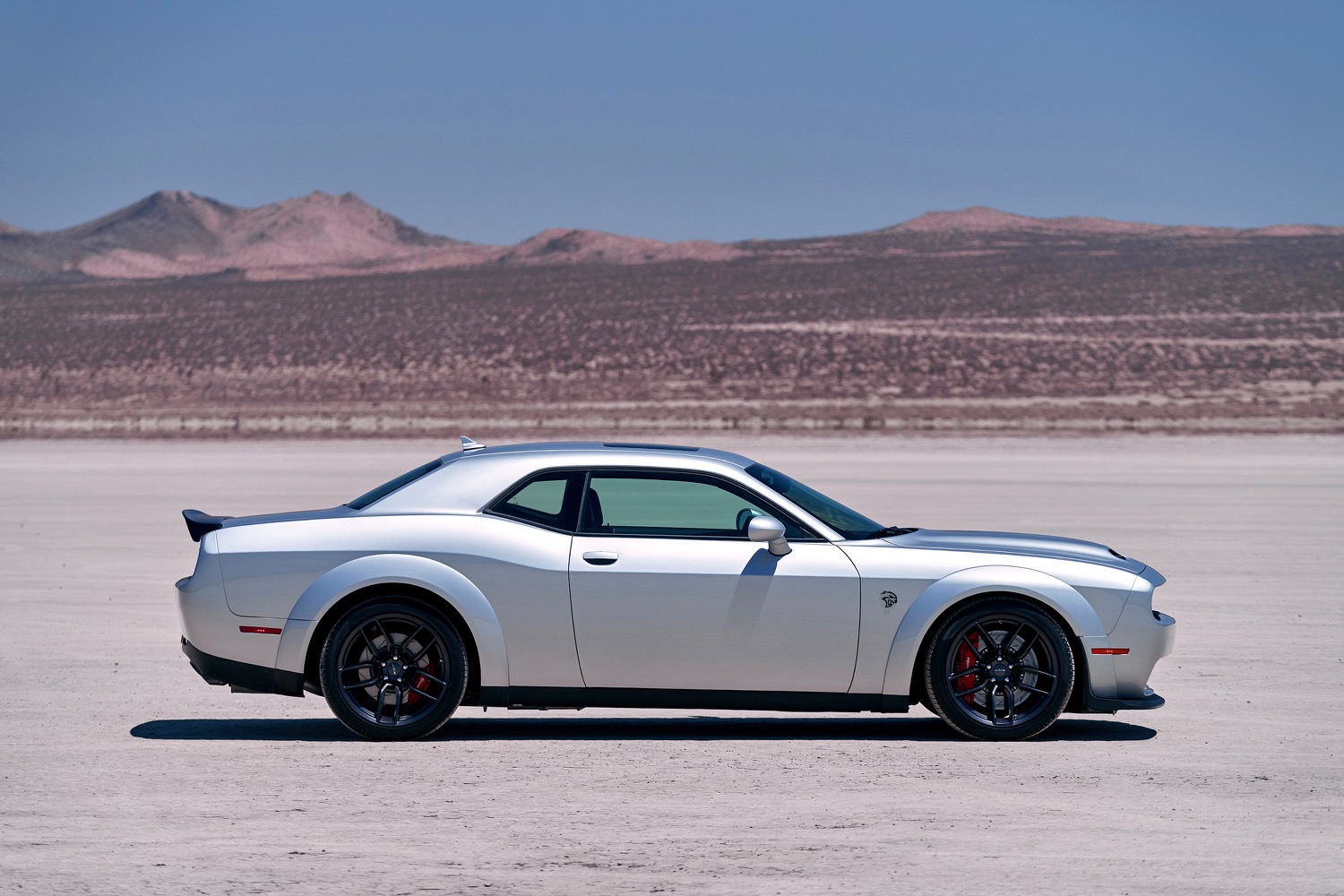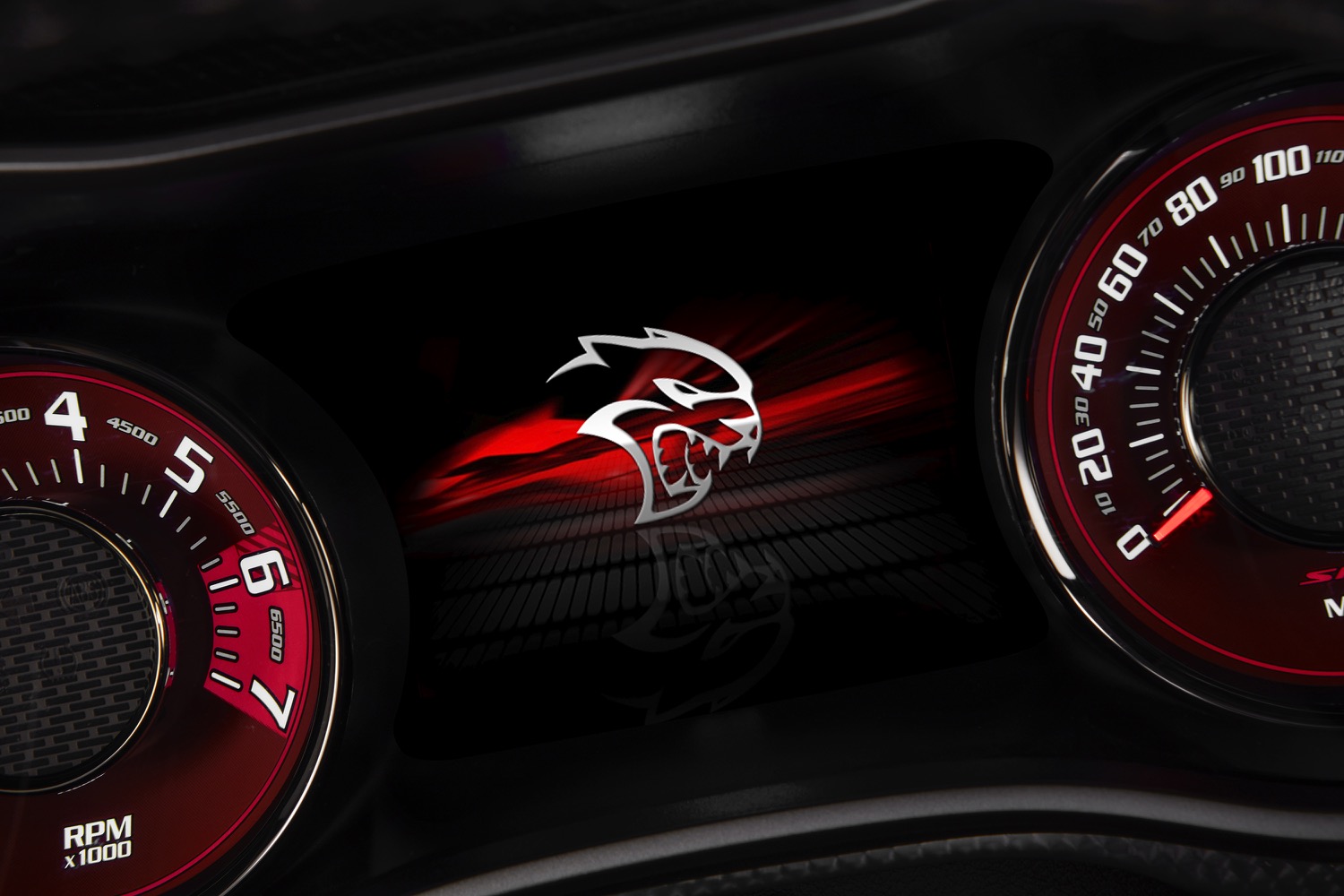The quarter-mile-crushing SRT Demon may be gone, but the updated 2019 Dodge Challenger lineup still has plenty of muscle. Apparently not wanting to let a good engine go to waste, Dodge is dropping the Demon’s 6.2-liter supercharged Hemi V8 into a new Challenger model: the 2019 SRT Hellcat Redeye.
Sporting red eyes in its Hellcat badges to show that it’s been possessed by the Demon (or maybe just had to endure a late-night flight), the Redeye boasts 797 horsepower and 707 pound-feet of torque. That’s a bit less than the Demon’s 808 hp and 717 lb-ft (or 840 hp and 770 lb-ft on 100-octane racing fuel), but it still makes the Redeye engine the most powerful V8 currently in production, according to Dodge. It’s also more powerful than many supercars.
The Redeye offers supercar-level performance, too. Dodge claims it will do 0 to 60 mph in 3.4 seconds, run the quarter mile in 10.8 seconds at 131 mph, and reach a top speed of 203 mph. Note that the quarter-mile time applies only to the Widebody version, which adds wider tires and fender flares to cover them. The standard version takes 0.3 seconds longer.
Dodge also revamped some existing Challenger models for 2019. The SRT Hellcat’s 6.2-liter supercharged Hemi V8 now makes 717 hp and 656 lb-ft of torque, up from 707 hp and 650 lb-ft. The Hellcat Widebody will now run the quarter mile in 10.9 seconds at 127 mph and tops out at 195 mph, according to Dodge. The standard version is a bit slower in the quarter mile (11.2 seconds at 125 mph) but has a higher top speed of 199 mph.
Both SRT Hellcat and SRT Hellcat Redeye also get some of the Demon’s electronic systems, including launch control, launch assist, and line lock, which locks the front brakes for easy burnouts. The Challenger’s main rivals, the Ford Mustang and Chevrolet Camaro, both offer that feature as well. The Hellcats also get the Demon’s Torque Reserve system, which helps build up the supercharger’s boost while the car is staged at the line for a quarter-mile pass.
The Widebody option is now also available on the lower-level Challenger R/T Scat Pack model. The Scat Pack sports a 6.4-liter naturally aspirated Hemi V8 making 485 hp and 475 lb-ft of torque. Dodge also added launch control, launch assist, and line lock for 2019, as well as retuned suspension, and a rear spoiler taken from the Hellcat. Dodge also made some styling tweaks across the lineup, including a retro dual-snorkel hood for the Hellcat models inspired by its 1960s and 1970s muscle cars.
Dodge will also continue selling Challenger variants with the 5.7-liter Hemi V8 and 3.6-liter Pentastar V6 that will slot below the Scat Pack in price. Dodge expects to begin delivering 2019 Challengers to dealerships later this year. Pricing starts at $27,295 for a base V6 SXT model, while the Hellcat Redeye starts at $71,350, according to Motor Authority. The latter price includes a $1,700 gas guzzler tax, but it’s still substantially less expensive than the $86,090 starting price of the one-year-only Demon.
Update: Added pricing information

















